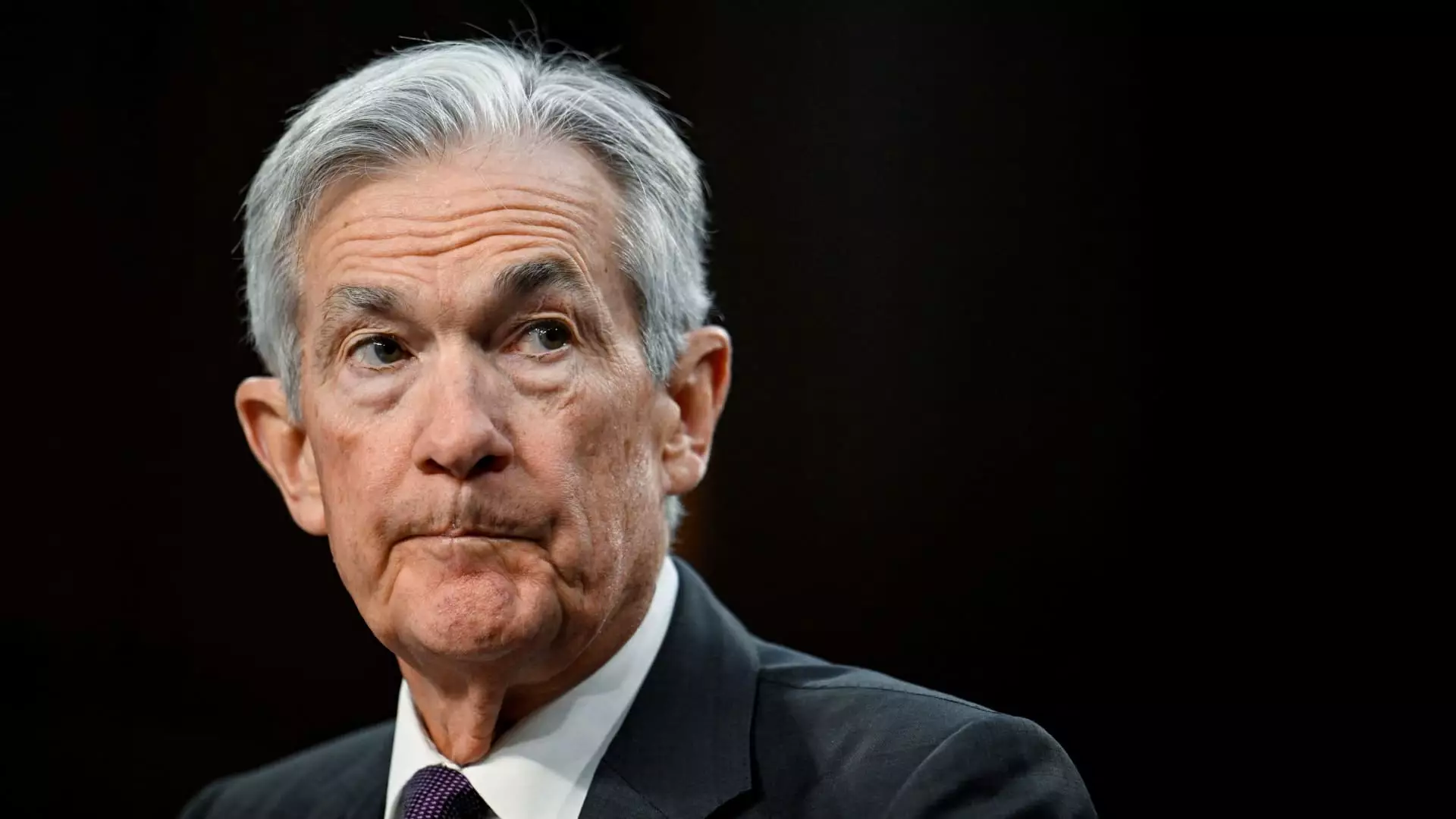The Federal Reserve (Fed) finds itself at a crossroads amidst a sea of economic perplexities. While policymakers assert that monetary strategies are “well-positioned” to adapt to potential volatility, an underlying truth may suggest they’re more entrenched than adaptable. The sentiment in Washington echoes a duality: an air of optimism spurred by potential regulatory shifts alongside a cloud of apprehension shaped by unpredictable trade and immigration policies. The Fed’s narrative is increasingly about caution, revealing the complexities residing not just within the economy but within the mechanisms of policy-making itself.
The Weight of Uncertainty
Atlanta Fed President Raphael Bostic articulates this tension in a recent blog post, suggesting the environment demands a blend of caution and humility in policymaking. He highlighted the challenges tied to trade relations, immigration policies, and fiscal decisions, pointing out that volatility can be detrimental to the economic landscape. This acknowledgment is mirrored by the minutes from the latest Federal Open Market Committee (FOMC) meeting, where frequent mentions of uncertainty signal a pervasive concern among officials about the unpredictable climate.
The mention of “uncertainty” illustrates a growing consensus among economists and policymakers that the current landscape is more than just merely unstable—it’s unpredictably complex. With multifaceted risks spanning from potential tariff impacts to changes in consumer behavior in response to fluctuating prices, the Fed may be forced to adopt a mentality of waiting and watching rather than proactive intervention.
Inflation control is a cornerstone of the Fed’s responsibilities, yet achieving the targeted 2% inflation rate has been an elusive objective. St. Louis Fed President Alberto Musalem pointed out that while he anticipates inflation aligning with this target, the risks tilt towards the upside. His belief in holding monetary policy at “modestly restrictive” levels implies that the central bank is reluctant to shift from its current stance without clearer indicators of inflation behaviors. As tariffs loom large in the economic discourse, fears about rising prices threaten to reignite inflationary pressures, further complicating the Fed’s policy framework.
However, the FOMC is not merely fixating on immediate inflation numbers; it is also highly cautious about the broader economic implications of a potentially shifting landscape, which could lead to prolonged economic unease. The interconnectedness of inflationary trends, employment stability, and consumer confidence requires a strategic delicateness that current conditions do not allow.
The current trade relations and the potential for escalating tariffs have become a focal point for Fed considerations. Chicago Federal Reserve President Austan Goolsbee’s insights indicate that the possible repercussions of tariffs and trade disruptions could evoke comparisons to historical shocks, such as those induced by the COVID-19 pandemic. This acknowledgment of the potential extensive fallout from global trade tensions signifies an important layer in the conversation surrounding economic policy.
Indeed, the nuances in trade relations and their implications for domestic economic health underline the Fed’s cautious approach. With tariffs capable of disrupting supply chains and altering consumer pricing strategies, the mood shifts from confidence to concern as officials assess the potential impact on both inflation dynamics and employment rates.
Financial Stability Concerns
Beyond inflation and tariffs, the Fed must also grapple with threats to financial stability. Recent FOMC discussions have raised alarms regarding leverage ratios and the amount of long-duration debt held by financial institutions. Renowned economist Mark Zandi has expressed strong reservations about the fragility of the bond market. His observations underscore the precarious dynamics that could lead to a severe sell-off in this vital phase of the economy, should confidence wane further.
These financial undercurrents add another layer of complexity to the Fed’s already difficult task of navigating economic policy. With substantial risks on the horizon, the pressure mounts to craft a policy that not only addresses immediate concerns but also fortifies the system against potential shockwaves.
As the Fed looks to the coming months and potentially years, the path forward remains laden with uncertainty. U.S. economic performance appears stable on the surface; however, underlying fragilities and risks have the potential to alter this narrative abruptly. The Fed’s cautious, patient, and observant approach seems not just advisable, but necessary, as challenges loom from multiple fronts—be it inflation, tariffs, or financial market dynamics. The central bank’s decisions going forward will require a level of adaptability in an unstable environment, reflecting the complex weave of global and domestic economic interdependencies that define today’s financial landscape.

